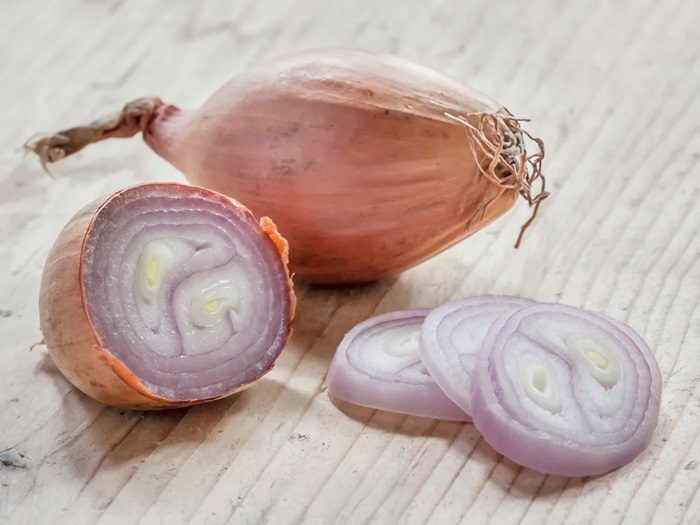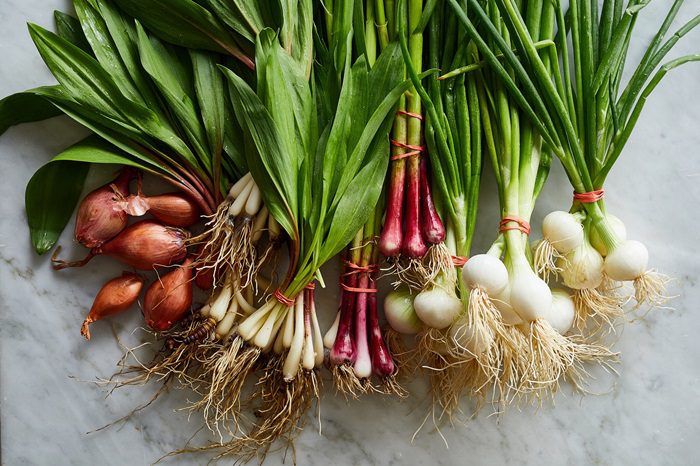Shallots bring a unique flavor to dishes—somewhere between garlic and onion—offering mild sweetness and a touch of sharpness. But if your recipe calls for shallots and you don’t have any on hand, don’t worry. There are several great shallot substitutes you can use without sacrificing flavor.
Whether you’re sautéing, roasting, or building a vinaigrette, there’s an easy way to recreate that shallot magic using common pantry items.
Let’s dive into the best alternatives for shallots, when to use each, and how much to use.
Table of Contents
What Is a Shallot?

A shallot is a small, bulb-shaped allium in the same family as onions and garlic. Its flavor is more delicate and sweet than onions, making it ideal for recipes where a strong onion flavor would overpower the dish.
Shallots are commonly used in:
- Salad dressings
- Sauces and pan reductions
- Stir-fries and sautés
- Roasted vegetable dishes
- Garnishes for meats or seafood
So when you’re looking for a replacement, you’ll want something that balances flavor and intensity.
Top Shallot Substitutes
Here are the best shallot substitutes, along with how to use them in different cooking situations.
1. Yellow Onion (or White Onion)
Best for: Sautés, stir-fries, soups, roasts
- Flavor: Stronger and more pungent than shallots
- Substitute ratio: 1 small shallot = ¼ small onion (or 2–3 tablespoons chopped)
To mellow out the bite of onion, sauté it slowly or soak it in water before using raw.
Pro tip: For dressings or raw uses, soak chopped onion in ice water for 10 minutes to tame the sharpness.
2. Red Onion
Best for: Raw dishes, salads, salsas, sandwiches
- Flavor: Milder than yellow onions, with a slight sweetness
- Substitute ratio: 1 small shallot = 2 tablespoons finely chopped red onion
Red onion is a great option in raw applications like vinaigrettes or cold pasta salads. Its color and texture are similar to shallots, too.
3. Green Onions (Scallions)
Best for: Garnishes, eggs, stir-fries, Asian dishes
- Flavor: Mild, fresh, oniony
- Substitute ratio: 1 shallot = 2–3 chopped scallions (use white and green parts)
Scallions are great in both raw and cooked dishes and offer a gentle onion flavor without overwhelming the recipe.
4. Leeks
Best for: Soups, stews, quiches, or sautéed bases
- Flavor: Subtle, sweet, and onion-like
- Substitute ratio: 1 shallot = ¼ cup finely chopped leek (white/light green part only)
Leeks are milder and slightly sweeter than onions and shallots. Just be sure to wash them well, as they often trap dirt between layers.
5. Garlic (in small amounts)
Best for: Boosting flavor in sautéed dishes, sauces
- Flavor: Pungent and aromatic
- Substitute ratio: 1 shallot = ½ clove garlic + a little onion
Garlic alone won’t fully mimic a shallot’s balance, but when combined with onion, it can approximate the layered flavor of a shallot.
Shallot Substitute by Recipe Type
| Dish Type | Best Substitute(s) | Why It Works |
| Vinaigrettes | Red onion, scallions | Offers a mild, raw-friendly bite |
| Stir-fries | Green onions, yellow onion | Mild, fast-cooking options |
| Soups and sauces | Leeks, yellow onion | Slow-cooked sweetness and depth |
| Roasts and braises | Yellow or white onion | Caramelizes well with rich meats |
| French-style sauces | Garlic + red onion | Closest to traditional shallot profiles |
How to Soften the Bite of Onion in Place of Shallots
If you’re using stronger onions like yellow or white, try these tricks to make the flavor more shallot-like:
- Soak chopped onions in cold water for 10–15 minutes before using
- Sauté gently over low heat until softened and lightly golden
- Roast or caramelize onions for a sweeter, milder flavor
These techniques help mimic the subtle sweetness of shallots.
Are Shallots the Same as Onions?


Not quite. Here’s a quick comparison:
| Feature | Shallots | Onions (Yellow/White) |
| Flavor | Mild, sweet, garlicky | Stronger, sharper |
| Size | Small, multi-clove | Larger, single bulb |
| Texture (raw) | Tender and crisp | Firmer and crunchier |
| Best uses | Sauces, dressings | Sautés, soups, roasted dishes |
Shallots fall somewhere between onions and garlic in taste—making them unique and nuanced.
FAQs About Shallot Substitutes
1. Can I use onion powder instead of shallots?
Yes, in a pinch. Use ½ teaspoon onion powder per shallot, but know it won’t provide the same texture or fresh flavor.
2. What’s the best raw substitute for shallots?
Red onion or scallions, soaked in ice water, offer the best raw replacements.
3. Can I use green onions in cooked dishes?
Yes, but they’re best added at the end of cooking, as they’re delicate and can lose flavor when overcooked.
4. Are shallots stronger than onions?
No—shallots are milder and sweeter than most onions, with a subtle garlic note.
5. Can I freeze shallots or substitutes?
Yes. Both shallots and chopped onions freeze well. Portion and store in freezer-safe bags for quick use.
While shallots offer a one-of-a-kind flavor, you don’t have to run to the store if you’re out. With easy substitutes like onions, scallions, or leeks, you can keep your recipe on track without sacrificing taste.
Just pick the right substitute based on the dish, use the proper ratio, and apply a few simple prep tricks to mellow or sweeten your swap—and no one will ever know the difference.

